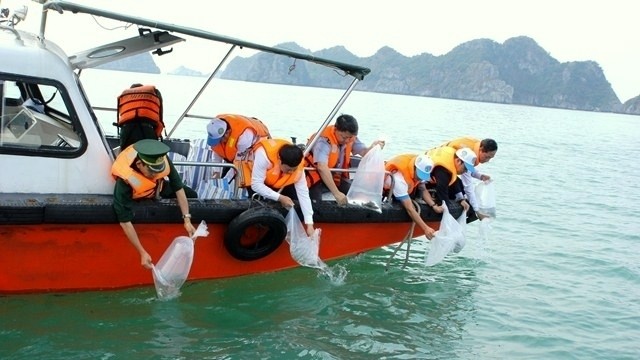However, it is worth mentioning that Vietnam’s annual aquatic products catch is about 3.4 – 3.6 million tonnes on average, higher than the sustainable exploitation level in relation to the country’s aquatic reserves. In addition, population growth, hydropower and irrigation development, and environmental pollution have adversely affected aquatic species’ migration routes while damaging their spawning grounds and habitat, leading to their degradation.
The increasing depletion of aquatic resources emanates from many causes. People’s awareness on preserving and protecting aquatic resources is not high. Some localities have not paid much attention to either protection or conservation. There is also a lack of policies to switch to sustainable use as well or to implement co-management in the protection of aquatic resources.
In such a context, it is necessary to build a plan to boost conservation and the sustainable exploitation of aquatic resources with an aim to protect, conserve, rehabilitate and develop fishery resources while ensuring efficient and sustainable exploitation, necessary to meet international requirements as well as to support the safeguarding of sovereignty.
At the eighth session of the 14th National Assembly, Minister of Agriculture and Rural Development Nguyen Xuan Cuong underscored several solutions to improve the efficiency of, management and protection of aquatic resources.
Specifically, it is necessary to build and implement surveys, overall assessments of aquatic resources and habitats every five years; investigate inland aquatic resources under the Fisheries Laws; survey the biodiversity and resources of deep-sea and mound marine products and at the same time allocate and manage the quota of fishing licenses in accordance with the permitted capacity of resources as well as establish new marine conservation zones.
Another important solution is to strengthen inspection, and strictly implement the Government’s decree on applying administrative punishments in the fishery sector and in the handling administrative violations. Localities should also work out measures to prevent illegal, unreported and unregulated fishing (IUU) activities as well as actively enhance international cooperation and share information and experience with countries on combating IUU effectively.
The Prime Minister recently approved the task of building a plan to boost conservation, and the sustainable exploitation of aquatic resources for the 2021-2030 period, with a vision to 2050. This move is expected to create an important turning point in conservation and the sustainable exploitation of the country's aquatic resources in the near future.
















